
Celestron 70mm Travel Scope Review!
Table of contents
| 0:42 | Pros and Cons |
| 1:35 | Setting it up |
| 2:16 | Don't expect top quality |
| 2:55 | Figuring out its magnification capability |
| 3:35 | Telescope Science 101 |
| 5:05 | My recommendation |
| 5:52 | Don't forget to subscribe ;) |
- #commissionearned: Ford Rasmussen and QualiTube may earn commission at no extra cost to you
This is a picture of the moon through my Lumix GF7 camera with a 20mm lens, which I realized wasn't the best choice for the subject at hand, but it was the lens I had on my camera at the time.
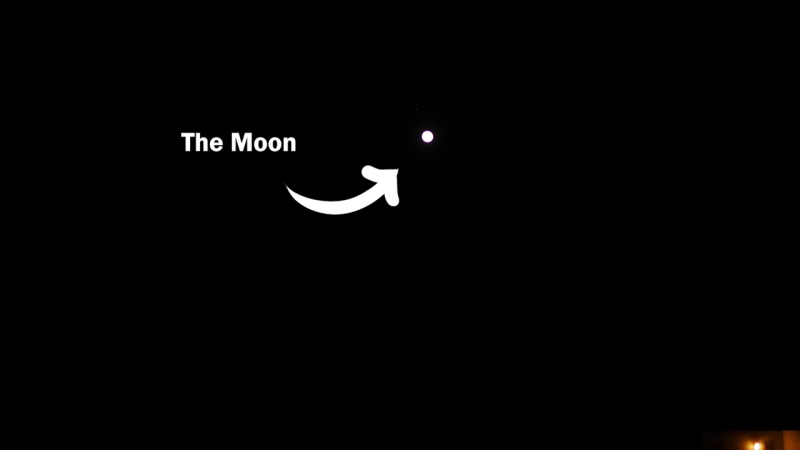
This is a picture of the moon that same night through my Celestron Travel Scope 70mm, a handy little telescope that I bought a couple of weeks ago.
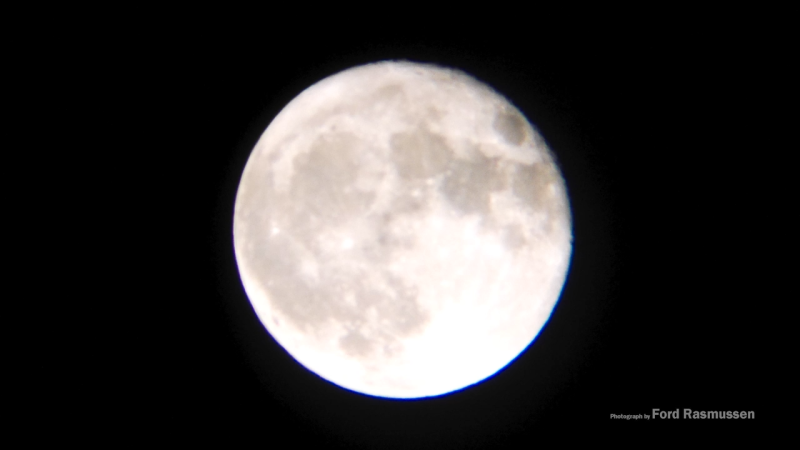

70mm refractor telescope with fully coated glass optics and a lightweight frame.
This was taken during the Lunar Apogee, which means the moon was in the farthest point of its elliptical orbit around earth at the time of taking this, so the moon was smaller than it could have been. In fact, during the Perigee, it could have looked like 14% bigger. It's a pretty nice shot considering the time of taking it and the price of the Celestron Travel Scope 70mm.
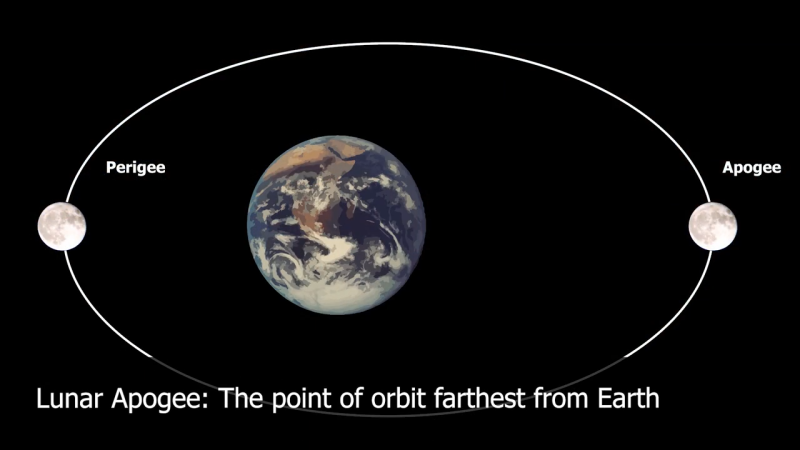
Pros and Cons
Let's weigh the pros and cons of the Celestron Travel Scope 70mm, and find out what else it can see. This telescope runs at about $90 (prices may change) right now on Amazon. I bought it secondhand for $50, which was a pretty good deal. Either way, this is a decent telescope for beginners who want to just dip their toes in astronomy before they start paying the big bucks $$$. This little guy is lightweight and portable. It hardly weighs a thing, and it comes with a handy little backpack, so you can take it anywhere you want, and it is quick and easy to put together. When you get it from the bag, all you really have to do is put the finder scope on, align the finder scope, put in the little wide joint, attach your eyepiece, and then put it on the tripod. It's very straightforward.
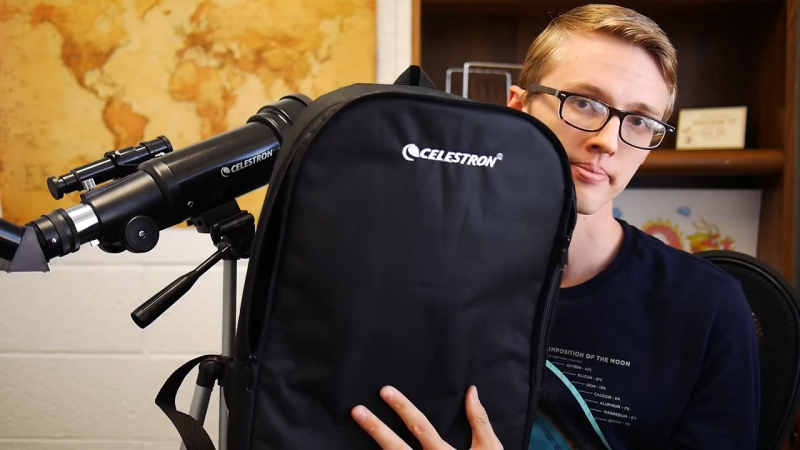
Setting it up
More expensive telescopes, on the other hand, usually come with nicer tripods that are a little harder to set up-you have to balance the tripod. I haven't done it. It could take a little bit more time, and more expensive telescopes require something called collimation, which basically means that you have to manually align the mirrors inside the telescope, so that everything lines up properly. With the Celestron Travel Scope 70mm, it's so straightforward and simple that I didn't require any of that. It was pretty much good to go out of the box. I brought this home and put it together in about 20 minutes, took it outside to align the finder scope during the day, and that night, I was able to see some stars, not the moon, because it was currently a new moon and there was no moon, but I could have also looked at the moon with it.
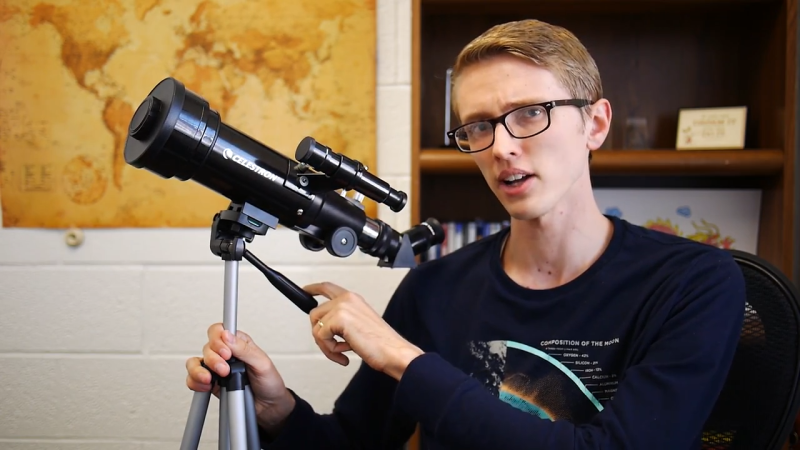
Don't expect top quality
Obviously, at this price, the materials of the Celestron Travel Scope 70mm aren't going to be top quality. The tripod is cheap and kind of a hassle to adjust. For example, I'll go to adjust the panning side to side and the tilt up and down by loosening the handles, and then once I align my object in the lens or the finder scope, I'll tighten it and then find that doing so slightly adjusts or shifts the view, making it hard to get the objects in the very center of the lens, which is where the best viewing experience is going to be. It's going to be clearest in the center. You just have to be gentle and patient with it, and it will stay in one piece and get the job done.
Figuring out its magnification capability
It's not the most sturdy tripod, but it stands on three legs, so it works out. Now, to the interesting part. What kind of views can you get with the Celestron Travel Scope 70mm? Well, you saw my shot of the moon already. To figure out how much this magnifies something, you take the focal length of the telescope, which is the length of the telescope, in this case 400mm, and then you divide that by the focal length of the eyepiece. I currently have a 10mm lens on mine. This one comes with both a 10mm and a 20mm. You can kind of see the difference in size there, maybe. So what's the difference between these two guys?


70mm refractor telescope with fully coated glass optics and a lightweight frame.
Telescope Science 101
Since you're dividing the focal length of the Celestron Travel Scope 70mm by the focal length of the eyepiece, the smaller number, in other words, the shorter eyepiece, will give you the greater magnification. 400 divided by ten is 40, so this is a 40x magnification. A 20mm lens would give you 20x magnification. I think it is the math. Why would you want less magnification? Well, more magnification doesn't mean more detail. It just means a bigger image. You could look at a blurry star. You just can't see a lot of stars very big, put in the bigger eyepiece, and you would just get a bigger blurry star. If you want more details, you need a bigger aperture, which is the width of the telescope.
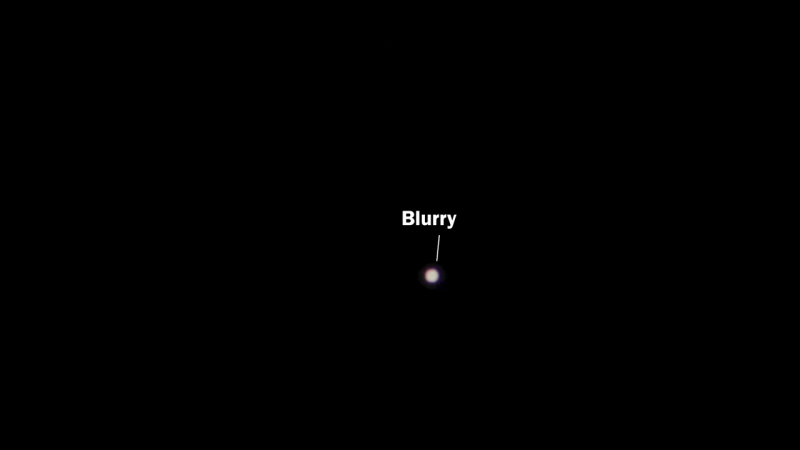
It's actually the eyepiece inside, but the width of the telescope will give you a good idea. A bigger, rounder telescope will have more light-gathering capabilities, and then you can see more details. This is why I'm excited to upgrade my telescope soon. It just costs a lot more money. With the Celestron Travel Scope 70mm, under good conditions, I can see the craters on the moon, pretty distant view. I can see Jupiter, and it's four Galilean moons, and I can see Saturn with a slight bulge in its silhouette, which would be the rings of Saturn. There's really not much detail, and it's pretty difficult to see even under great conditions. I did adjust the brightness and contrast on this image of Jupiter, and guess what I saw?

My recommendation
The bands of Jupiter! You couldn't really see that in real life, but enhance that image right there and check it out. I know it's kind of pixelated, but it's there. That's Jupiter, my folks. It's pretty neat. I know it doesn't sound like much and you are pretty limited in what you can see with this telescope, but it is so neat to see these things for yourself in the night sky. The images don't do it justice, even with the... I mean they're cool, but seeing it in person with a Celestron Travel Scope 70mm, the night sky is beautiful. I would recommend this telescope for beginners who want to give it a try to see what astronomy is like and see a couple of cool things and experience it. However, if you want to see more than what I talked about, then you are going to want a bigger and more expensive telescope.

Don't forget to subscribe ;)
Still, I am not done playing with his toy. It's quite fun, and I'm excited to check out Orion's Belt when it comes up over the horizon on my side of the hemisphere this winter. I'm not sure if I'll be able to see much, but that's okay. Stargazing is just fun. Even without a telescope, the night sky is beautiful. It really is. Take some time to look at the sky tonight if conditions allow, and think about how amazing our universe is, and most of all, remember to smile. Thank you for watching everybody. I really do appreciate it. You know what to do next. If you have any questions leave them here. Please, have a good day, and I will see you next time.

70mm refractor telescope with fully coated glass optics and a lightweight frame.



About Ford Rasmussen
Lifelong Learner. Artist. Youtuber. I tell stories, do art, and create explainer videos. There is new things to learn every day, and always something to smile about.